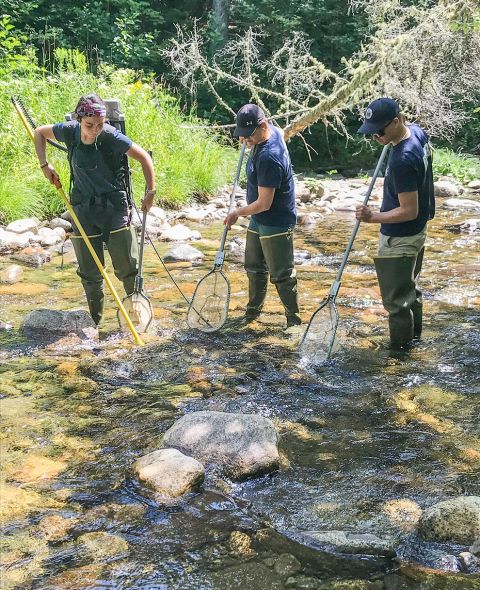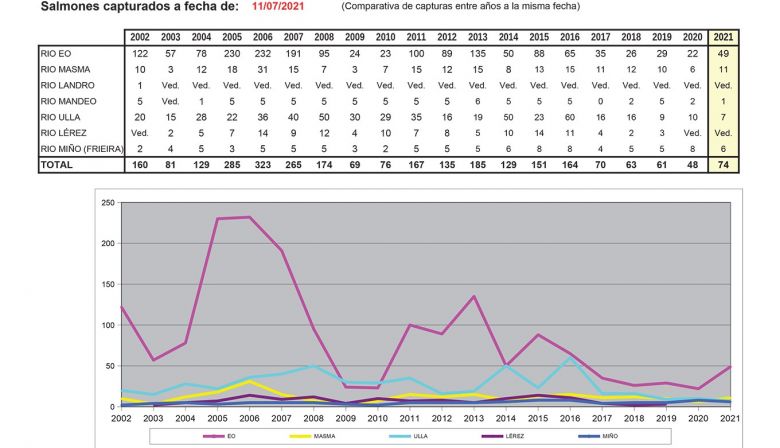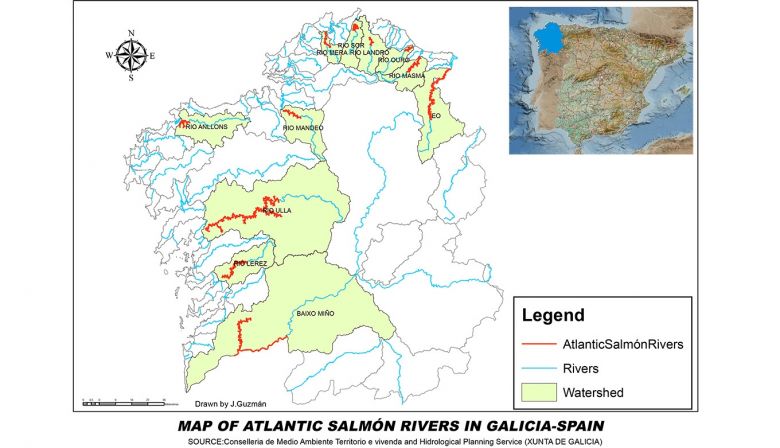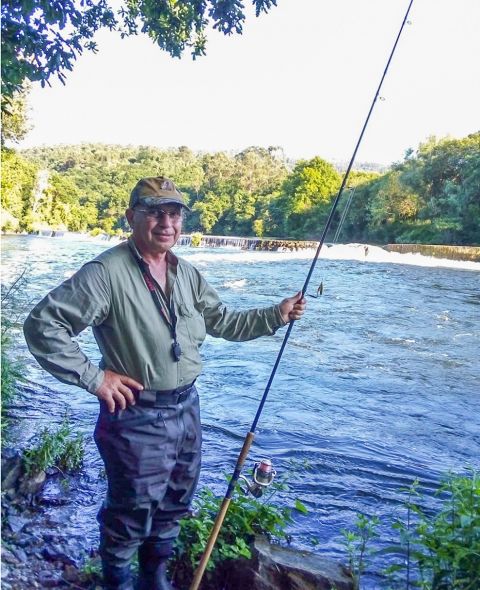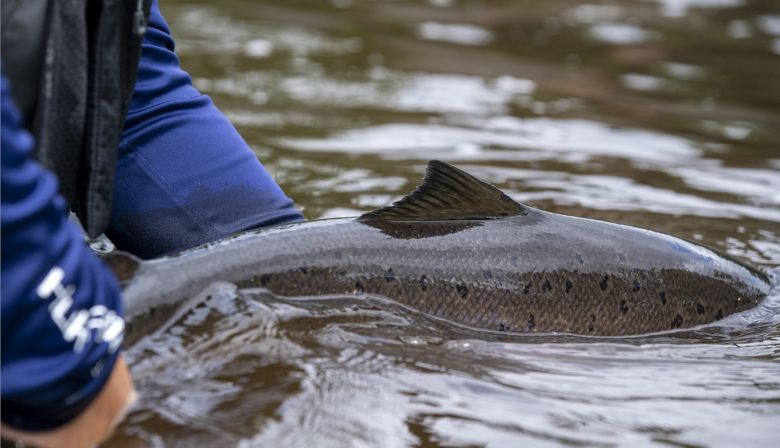
Subscribe & stay up-to-date with ASF

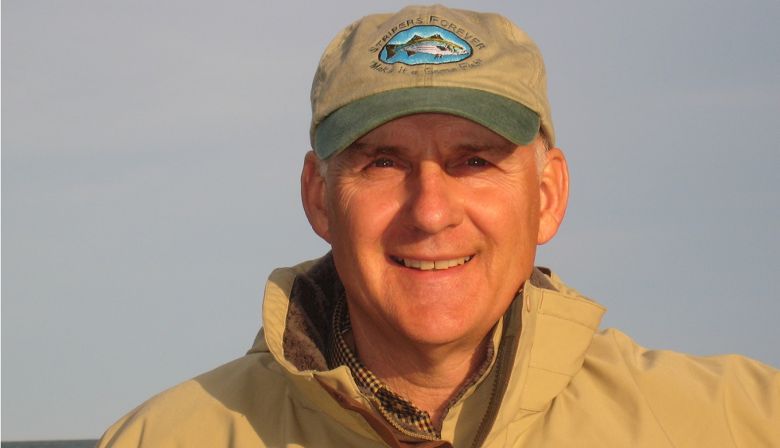
We didn’t know what the lineup might be like, so we were there a couple of hours early, but then had to wait. We had no idea what to expect.
We had downloaded and filled out the ARRIVECAN app, and I must say it was pretty slick. You can fill it out either on a computer or a phone, but in many ways using the phone was better. It does things like get you to take and place a scan of your passport – and the phone version guides you to exactly the right size to fit in the correct space in the template.
Besides having to be fully vaccinated for at least two weeks, the requirements include your having a negative Covid-19 test within the previous 72 hours. Down in the Portland, ME area the local hospital is impossible for that, but fortunately there is a clinic, one of a chain called “Convenient MD”. They allow both appointments or walk-in. For $175 they give you an approved Covid-19 test, and guarantee the results within 48 hours. In my case they came back 24 hours after the test.
As the time for the border crossing approached, we were somewhere around the eighth vehicle from the front, so that wasn’t too bad.
The border agent was friendly, and the whole process took about 12 minutes at this border crossing. I find Woodstock/Houlton is always the most efficient. One reason the system was so fast is that all the information was already in the officer’s computer, thanks to the ArriveCan app.
He did remark that it would have been nice on this first re-opening to have a second lane open, but still, it all went very smoothly.
After the border, it was clear driving over to the TransCanada Highway, down through Fredericton and up towards Blackville, and back into salmon country.
Brad Burns also noted there were a few fish, but not great numbers at the moment. He points out it is normal in this summer heat for them to go from cold water area to cold water area, and do it pretty quietly.
Editorial Comment:
We have not heard of any issues with the system of ArriveCan and border entry. It has been noted that the St. Stephen entry points have been slower. One friend crossing into Canada to visit their lakeside home for the first time in 16 months said they crossed at the “third bridge”, because if they were randomly pulled over for a crossing point Covid-19 test, it would easily be done on site.
Certainly it is a system too cumbersome for most day-trippers, with the requirement for a negative Covid-19 test in the 72 hours prior to entry. In the case of Brad Burns it was $175, and we would certainly like to know what the experience, and cost, for others has been.
While Delta Variant cases have been increasing in both the U.S. and Canada, so far that increase in Atlantic Canada has been low.
For salmon anglers there is one other “bump” on the horizon for those travelling into Quebec. The QC government is instituting a Covid Passport system that will go into effect on 1 Sept. But no one has wrapped their mind around how it would impact U.S. or other foreign visitors. The QC Covid Passport is meant to control the access to restaurants and such. How this might affect fishing lodges is anyone’s guess. While details are still fuzzy, it appears at this point the use of it is somewhat discretionary, and it doesn’t apply to buying groceries or wine. The passport is being beta-tested right now in Montreal and Quebec City.
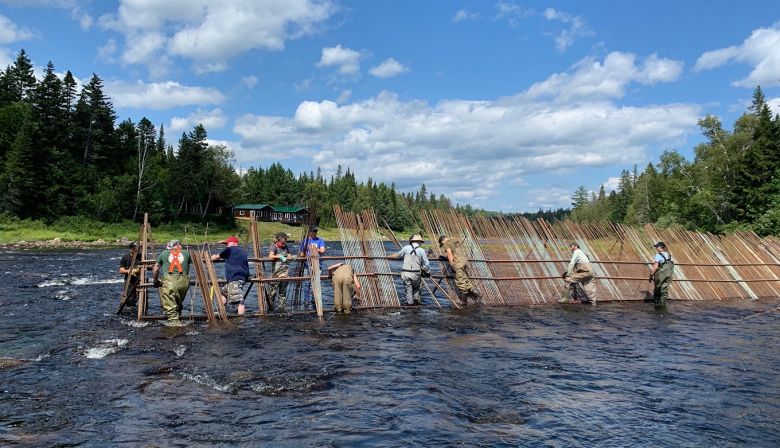
Nathan Wilbur, ASF Director of Regional Programs writes:
Our working group on smallmouth bass eradication, volunteers, and NB DNR installed an 80 metre-long barrier fence on the Southwest Miramichi to keep Atlantic salmon from migrating up into the eradication zone. This is a key mitigation of the project and was an enormous team effort. This week we are doing a fish rescue to remove adult salmon that are already in the project area in key holding pools. We will transfer those fish to below the barrier.
Tom Cheney, Manager of ASF Communications, documented the next step after building the barrier – removing as many fish as possible from the area affected
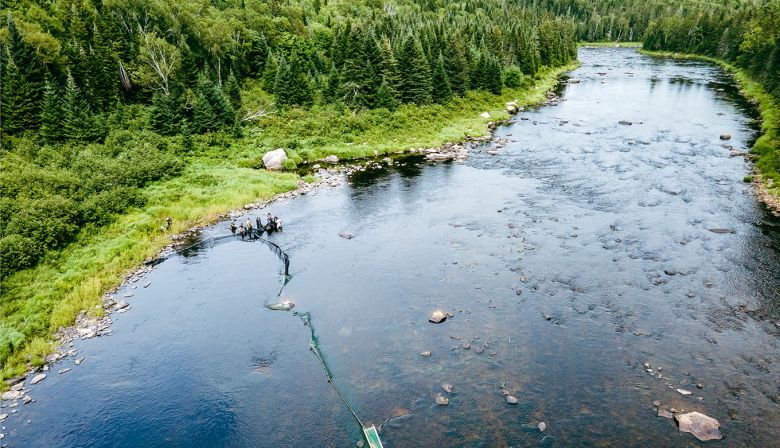
Tom Cheney writes:
A key mitigation measure for next week’s smallmouth bass eradication was a fish rescue from the treatment area. Staff from ASF, MSA and students from Canadian Rivers Institute put in three long, hard days removing fish from the area and transporting them to safety.
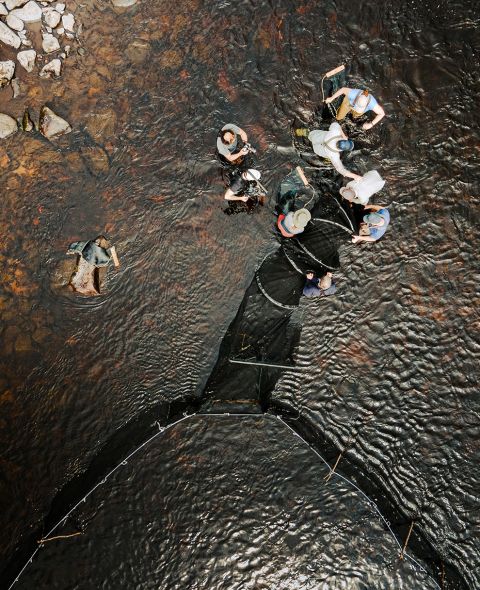
The intricate and highly organized eradication effort is likely to continue until the period of treatment sometime next week, followed by several days of monitoring the results. Fortunately little rain is in the forecast through the project’s active period in the next ten days. This is important for safety as well as effective deployment of equipment and the chemical involved. The chemical will be inert a few days following its application, allowing full natural regeneration of the waterways.
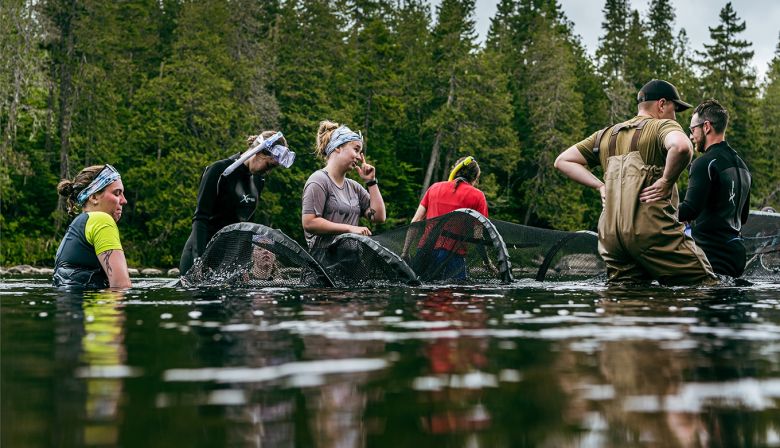

While we got through July successfully due to regular rain showers and only moderately warm temperatures, the hot weather has caught up with us at last.
The Warm Water Protocols have been instituted as of TODAY – Fri., Aug. 13, 2021. Anyone involved with angling on the Miramichi needs to check it out.
Warm Water Protocols page of DFO.
Southwest Miramichi
On the Southwest Miramichi there have been significantly greater counts of large salmon this year, a fact that anglers agree to.
At the Millerton Trap Net there have been 209 large salmon as of July 31 2021. With 2020 not measured, 2019 figure was 85. For grilse, there have been 761 vs 366 in 2019.
As to the Aug. 8 numbers at the Dungarvon River barrier, there have been 110 large salmon, vs 70 in 2020. As to grilse, 78 this year vs. 79 last year.
Brock Curtis of Curtis Miramichi Outfitters in Blackville says:
Last Fridays the rain bumped the Miramichi up a couple of inches here on the lower section of the river in the Blackville area.
It has dropped since then and we could use more rain. Temperatures are rising this week bringing with it a heatwave. This is the first week in a very long time with no major rain in the forecast.
That is probably a good thing for the Smallmouth Bass eradication happening upriver.
I see Miramichi Salmon Association has put out a call for volunteers for this initiative. Anyone interested can contact the MSA office.
Although we need rain and cooler temperatures it hasn’t discouraged salmon from taking the fly.
A lot of our customers coming into he tackle shop are reporting seeing salmon and hooking into salmon. It is unreal the salmon that are still being caught for this time of year. Normally we are well into dog days and things would be slowing down. This is without a doubt one of the best salmon angling years we have seen in a long time.
Northwest Miramichi
At the Cassilis Trap net, there have been 113 large salmon this year to July 31, vs 38 in 2019. For grilse, 281 in 2021 vs 206 in 2019.
The Northwest Barrier to Aug. 8 has had 87 large salmon, vs 124 in 2019, a significant decline. For grilse it has been the opposite, with 153 vs 81 in 2019.
Tom Pettigrew had a comment on the situation on the Northwest Miramichi:
The Northwest Miramichi River needs to be between 0.7 and 0.9 on the gauge to provide a good fishing level for Atlantic Salmon. At 1.0 on the gauge the river is too high and at 0.6 it is too low. Drought level is at 0.5.
You will note that the river levels over the two month period [in June & July 2021] offered just two opportunities to fish under good water conditions. Once in early June and once following the raise from tropical storm Elsa. Both were for no more than three days. The river is now in drought condition and for the year to date angling results on the Northwest Miramichi have been terrible, as evidenced from posts and comments on the Facebook Group page New Brunswick Crown Reserve Reports.
The question is whether the drought conditions are a random event of the past few summers, or whether it is a trend linked to climate change. Certainly important factors to consider.

Paul Elson notes:
The entire Northwest Miramichi system and Renous are in desperate need of rain, water levels are very low. Despite the low flow rates we are seeing fish entering the system but they are very finicky and easily spooked.
The mornings and evenings have been the best, using a light leader, very small wet flies, #6-#10 bombers and delicate casts has proven to be effective.
Water temperatures have creeped up into the high zone this week 23 C+, so no more fishing for me until things cool down or we get some rain.
Overall, in these higher temperatures to be seen at this point in the week, anglers are well advised not to fish Atlantic salmon at all. If a fish is hooked, do not play it long, do not remove it from the water, and carefully hold it still, facing up-current, until it recovers
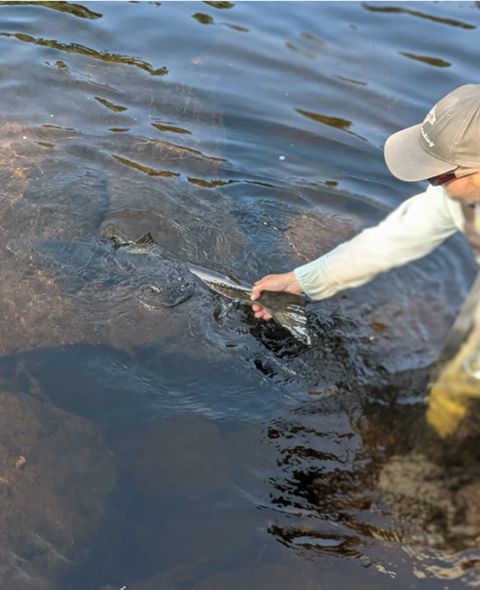
The Atlantic salmon numbers at Mactaquac are at best described as pitiful. Just 56 large salmon to July 31, vs 120 in 2020. As to grilse, 211 in 2021 vs 323 in 2020. Looking into the more distant past, the 1998-2002 average was 2,416 grilse – and that was considered low at the time.
Quite bluntly, this is a river in real trouble. The Mactaquac Dam, problems for Atlantic salmon navigating the headpond with its fickle currents, predators, water heating in stillwater, etc. all need to be taken into account. Also forest practices and the upstream dams as well. Plus problems of increased mortality at sea.
Nashwaak
Like other sites, comparisons need to avoid 2020. To July 31 2021, 16 large salmon vs. 32 in 2019. As to grilse, 70 vs 108 in 2019.
Nepisiguit
The Nepisiguit is also closed due to the warm water. As to numbers counted by the Pabineau First Nation, to Aug. 3 it was 146 grilse and 118 large salmon.

Entre-temps, les niveaux d’eau sont toujours extrêmement bas et la température de l’eau est élevée sur la plupart des rivières. À plusieurs reprises, des précipitations abondantes ont été prévues, mais elles ne se sont pas concrétisées.
Les conditions d’eau plus chaude étant la norme en ce moment, veuillez svp réduire au minimum la durée du combat si vous piquez un saumon et veuillez les garder le poisson dans l’eau pendant tout le processus de la remise à l’eau. Il n’y a pas de temps prédéfini pour relâcher un poisson, il vous indiquera quand il est prêt à partir.
Bien souvent, le succès de pêche est un indicateur de l’abondance présente dans une rivière. Dans le cas de rivière Matapédia cette saison, le succès au 31 juillet connait une baisse marquée comparativement à la saison dernière. Par contre, lorsque le décompte de mi-saison fut complété a la fin juillet, plus de 1 500 saumons avaient été répertoriés qui dépassent la cible nécessaire afin de permettre une récolte.
Une augmentation substantielle au niveau des madeleineaux continue à se manifester qui est un signe très encourageant.
Rappel aux saumoniers pêchant les rivières du Québec, prenez le temps de rapporter vos prises et remise à l’eau afin d’avoir des statistiques précises et que les gestionnaires de rivière puissent calculer le succès de pêche avec précision.
Tight Lines!
** Les données utilisées dans ce rapport proviennent de divers sites Web, médias sociaux et des sources du gouvernement du Québec.
Chronique de pèche du 4 août avec Jocelyn Leblanc a l’émission « Bonjour La Côte »
A cette émission, Jocelyn discute du déroulement de la saison 2021.A cette émission, Jocelyn discute du déroulement de la saison 2021.
Rivières York, Dartmouth et Saint-Jean
Voici les résultats affichés au 31 juillet sur le site de la Zec Gaspé jusqu’à ce jour en 2021.
York 422 captures (incluant les remises à l’eau) 3 728 jours-pêche (2 859 en 2020)
Dartmouth 205 captures (incluant les remises à l’eau) 1 170 jours-pêche (889 en 2020)
Saint-Jean 152 captures (incluant es remises à l’eau) 537 jours pêche (479 en 2020)
Visiter le
https://saumongaspe.com/riviere-york/declaration-de-remise-a-leau.html
afin d’enregistrer une remise à l’eau.
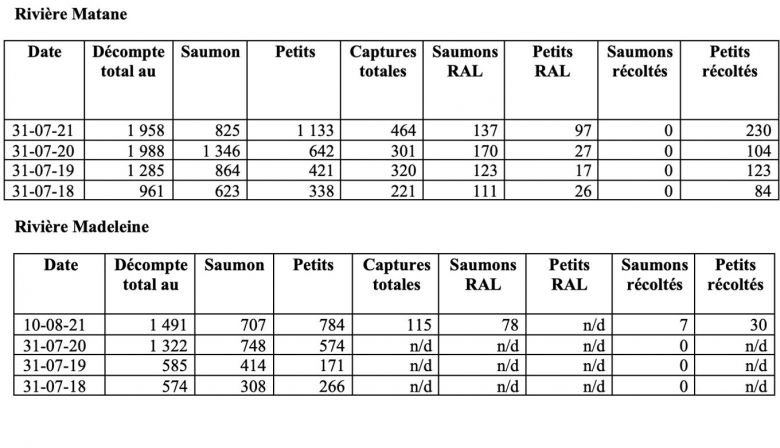
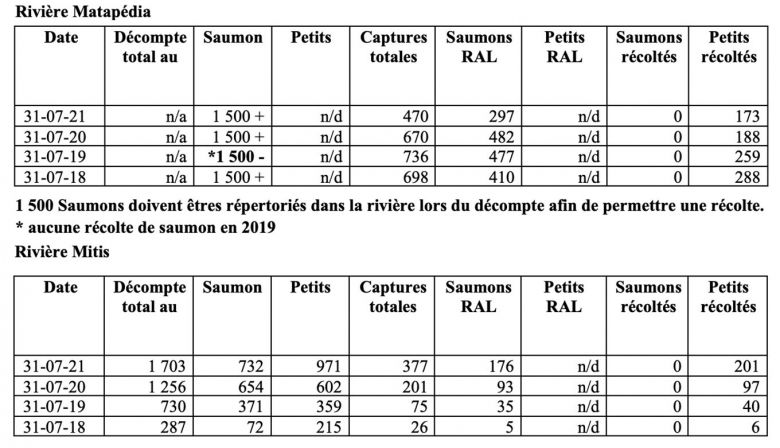

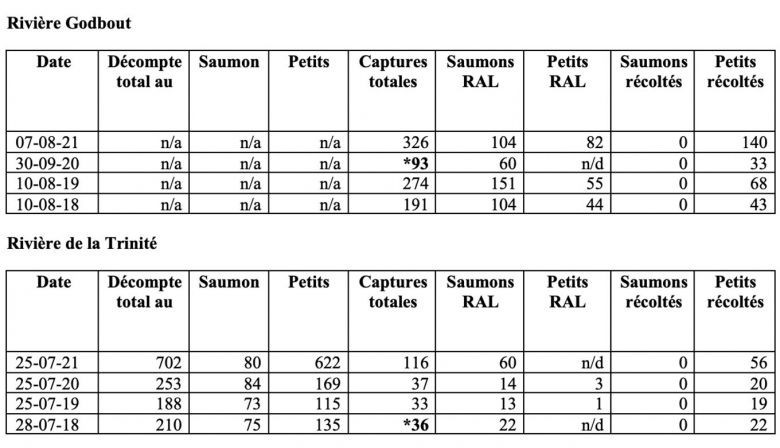
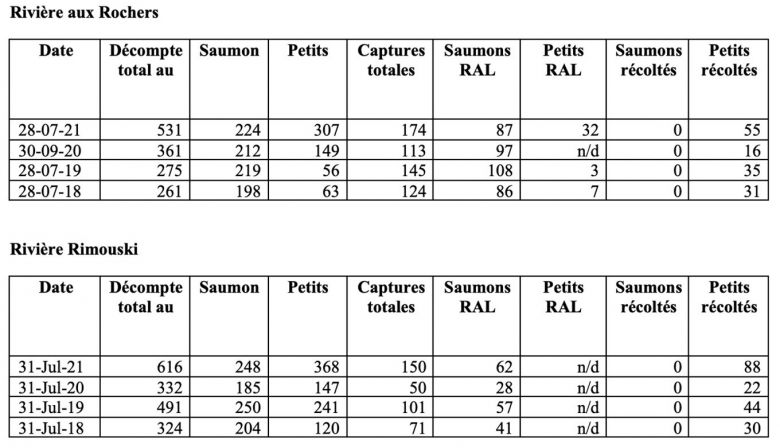
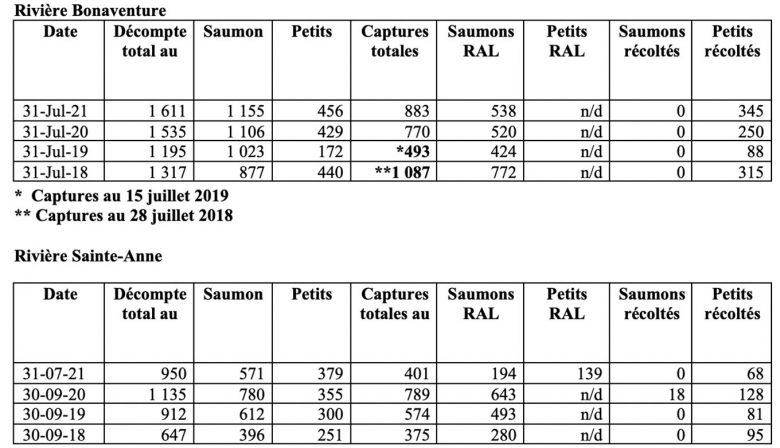

At printing of this report, water levels are still very much on the low side and water temperatures on the higher end of the spectrum on most rivers. This week I am presenting data made available on how things stand at the mid-season point (July 31st) compared to the same date in 2020, 2019 and 2018.
Large amounts of rain had been forecasted during the last two weeks but did not really materialize too much.
Quite often, angling success can be a harbinger of how runs of a particular river are unfolding. On the Matapedia for example, the success rate is down substantially to July 31 compared to last year. The recent assessment resulted in confirming that over 1,500 mature salmon were present which exceeds the target to attain optimal spawning requirements.
Reminder to anglers fishing Quebec Rivers, take the time to report your releases to have the most accurate angling statistics and for the river managers to accurately calculate angling success.
With warmer water conditions being the norm, please keep the amount of time your fish is on the line to a minimum (if you can hook up) and please keep them in the water during the entire release process. There is no pre-set amount of time prescribed to release a fish, it will tell you when it’s ready to go.
** Data used in the Quebec River notes are sourced from various river websites, social media and Quebec government sources. Information can change without prior notification regarding prior year comparative figures.
York, Dartmouth, St-Jean Rivers
To July 31st, 2021, here are the statistics released by the Gaspé Zec.
York 422 captures (incluant les remises à l’eau) 3 728 jours-pêche (2 859 en 2020)
Dartmouth 205 captures (incluant les remises à l’eau) 1 170 jours-pêche (889 en 2020)
Saint-Jean 152 captures (incluant es remises à l’eau) 537 jours pêche (479 en 2020)
To register a release on one the rivers above, please visit
https://saumongaspe.com/riviere-york/declaration-de-remise-a-leau.html
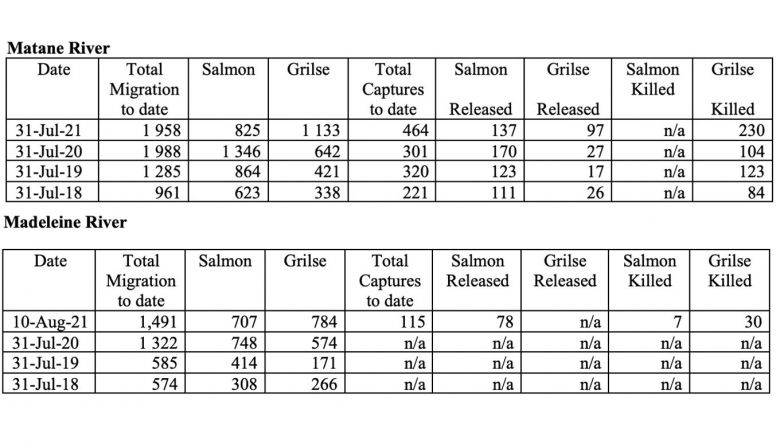
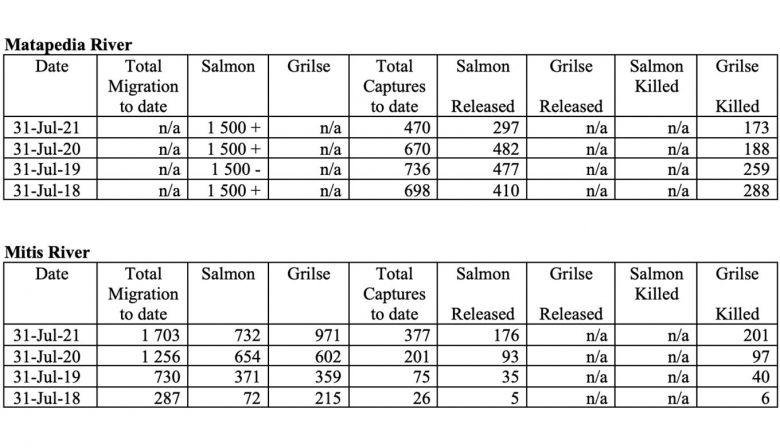

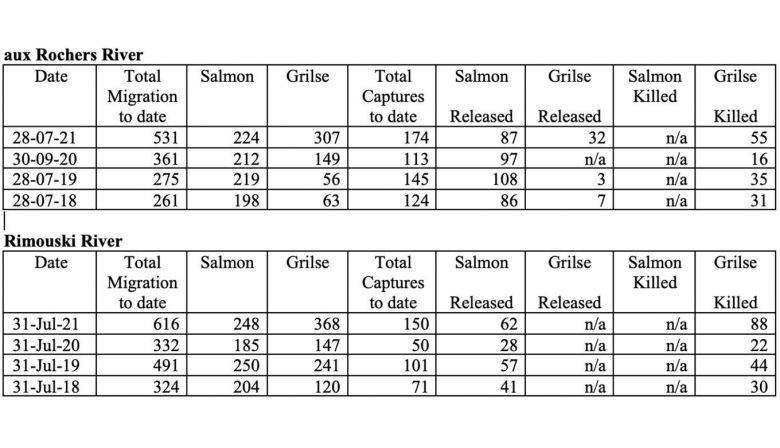
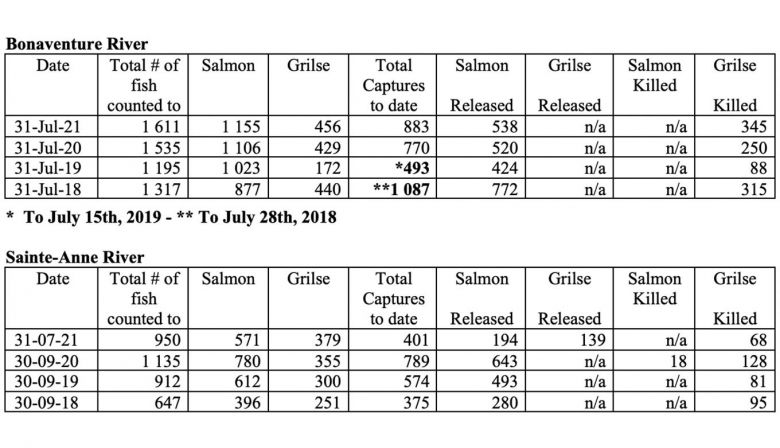
In most cases we are now past peak runs and there seems to be more fish in the upper section of most rivers versus the lower sections.
However, good numbers of fish are still coming into a few rivers including the Exploits which saw another 4,000 fish enter the system last week alone. The western section of the Island of Newfoundland received some very heavy rain during the past week or so, and water levels remain fairly high in this area.
Meanwhile, the rest of the Island and most of Labrador have experienced little rain, and water levels in these areas remain low. Water temperatures are still on the warm side on most rivers throughout the province.
DFO’s environmental protocols have kicked in and many rivers are now restricted to morning fishing only, while those rivers that have cooler temperatures remain open for all day fishing. Conditions on rivers throughout the province are changing daily so anglers are reminded to check the ‘River Status Section’ on DFO’s web-site, for information on the latest openings and closures, before heading to their favourite rivers to fish.
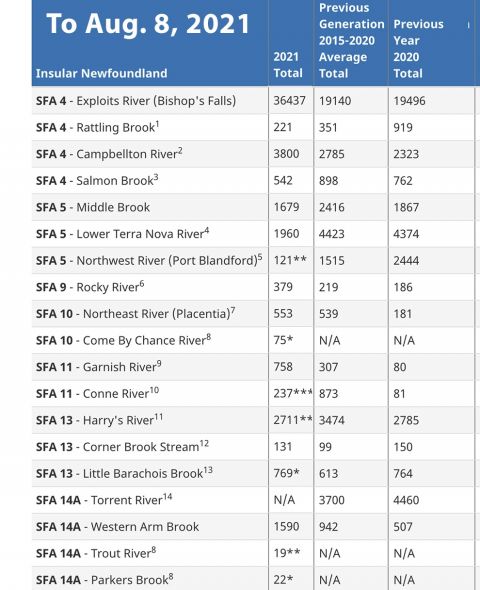
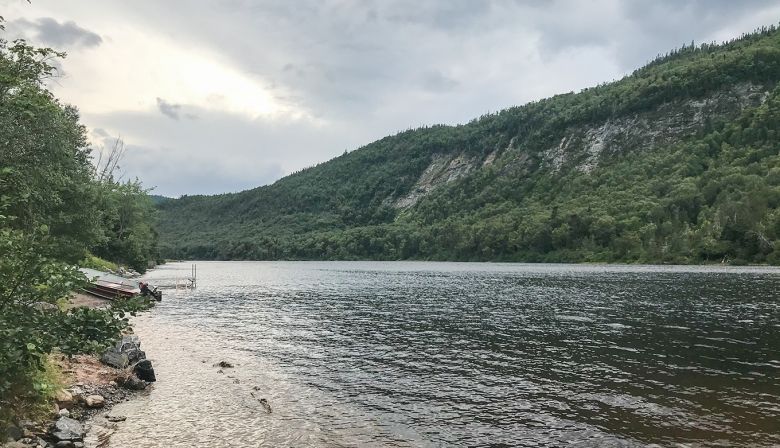
Heavy rain in Western Newfoundland during the past week resulted in very high-water levels making angling difficult, if not impossible, on many rivers in this area. In fact, we received so much rain that adult salmon snorkel surveys scheduled for many of the Bay St. George Rivers, organized by the Bay St. George South Development Association for the week of Aug 9-13, had to be postponed. These surveys will be rescheduled if water levels revert to low conditions. For now, water levels in this area have started to recede and angling activity has since picked up, but fishing has been slow, primarily due to warm water conditions.
Likewise, heavy rain during the past week on the Humber River resulted in extremely high-water levels, bringing angling to a near stand still for about a week. The Lower Humber River, which is mainly fished from boats, has cooler water temperatures and is still fishing well based on angler reports. Anglers are hooking some large fish (in the 20-30 lb range), in this section of the river and word has it that there is a lot larger fish being seen and hooked in this section of river this year than during the previous year.
Northern Peninsula
Again, very heavy rain in this section of the province caused most rivers in this region to swell their banks making fishing very difficult. Well known angler, Dave Vardy, was on the Castor River last week and reported very high-water levels there, as well as on Big East, Torrent River, and Portland Creek. He did hook a grilse on the lower section of the Castor River but reports that few fish were seen as most fish have now reached the upper section of the river.
In the meantime, reports indicate that there is still a good sign of fish on Main Brook (aka Salmon Brook) near Roddickton.
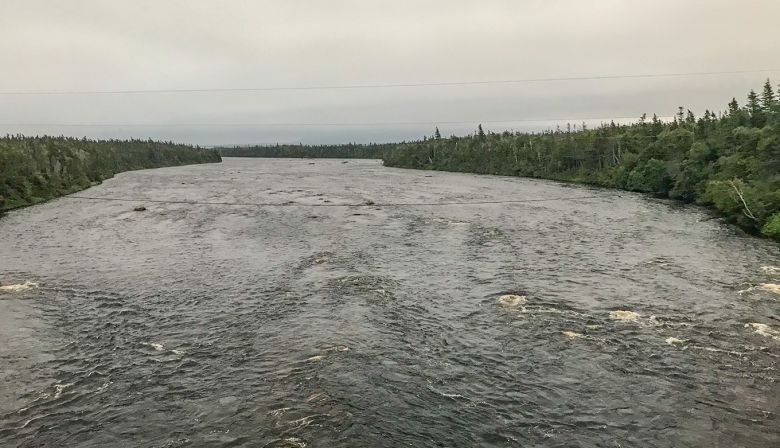
Good reports continue to come in regarding the Exploits River which is experiencing a significant rebound from the past few years. During this past week alone approximately 4,000 new fish enter the river and were counted at the Bishops Falls Fishway. Anglers continue to report that there are lots of fish throughout the river and water levels remain good, however, according to angler, John Brent, water temperatures are on the warm side and fish are somewhat difficult to coach to the fly currently.
Meanwhile, the Gander River, Terra Nova River, and a few others in the surrounding area continue to suffer from a lack of rain and remain very low. There are reports of fish in the systems but fishing is still slow, due mainly to fairly warm water temperatures.
South Coast
Rain has been somewhat spotty on the south coast during the past two weeks and as a result the low water conditions experience on many rivers in this area all summer, improved slightly. For instance Grey River experienced a good dose of rain which improved fishing.
Meanwhile, Conne River received very little rain and remains very low. Most rivers on the Burin Peninsula received a good dose of rain late in July, which improved water conditions on rivers in this area. However, reports indicate that few fish are being seen on most of these rivers currently.
According to angler, Matt Antle, the exception seems to be the Bay de Lou River which still has a good sign of fish. However, because the water temperature has been fairly warm fishing has been slow.
Heavy rain experienced on the Avalon Peninsula about a week and a half ago resulted in water levels increasing from low to about medium level on most rivers in this section of the province. This coupled by a slight drop in water temperatures resulted in good fishing on many of these rivers for about a week or so before the fishing slowed again. The following report came in from well known angler Rick Maddigan on Aug 04th:
Thought I would give you an update on the Salmonier River.
What a difference 50 mm of rain makes! The river went from dead low to a perfect angling level after the rain on July 21 and 22, and DFO opened the river to normal angling hours on July 23. The rain coincided with the full moon which brought the last of the fresh fish into the river. Add in all the fish that had previously been held up by the low water and you had a bit of an angler’s dream. Fishing is slowing down now but for the past 10 days the fishing was good. Lots of fish on the Salmonier this year- the run easily exceeded the 1,200 needed for minimum spawning.
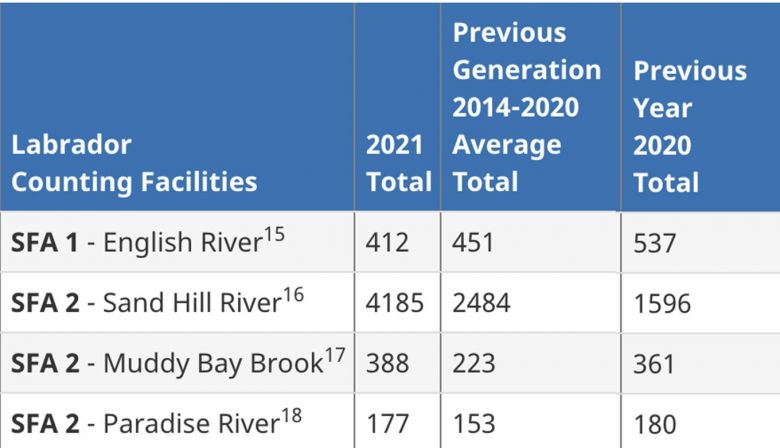
As a result of heavy rain during the last week of July, water levels improved on most rivers in Labrador from the Forteau River in the south to Flowers River in the North.
This coupled with a slight drop in water temperatures resulted in improved fishing on many rivers throughout Labrador for at least a week after the rain.
Dwight Lethbridge, proprietor of Pratt Falls Lodge, reports that their guest experienced good fishing during the last week of July and there was still a good sign of fish in the river.
SPAWN board member, Graham Roome, fished the Flowers River last week and reports that while water levels were on the low side there were lots of fish in the river and fishing was good.

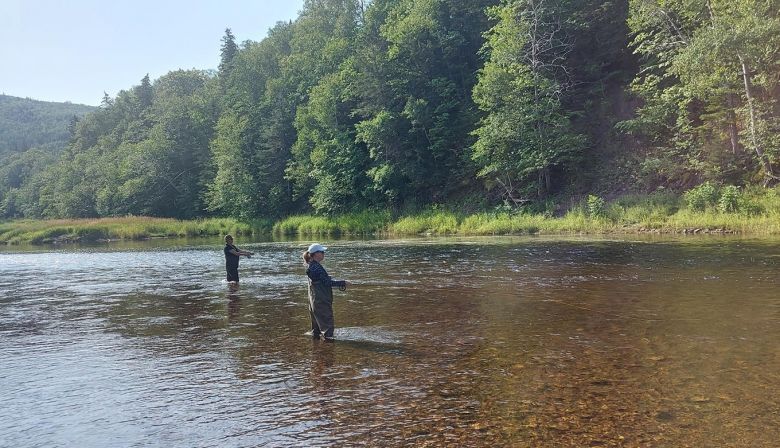
Patrick Poirier writes:
As the summer run begins to slow, there are still number of fish being hooked, in both lower and upper parts of the Margaree.
But as water levels are dropping we are starting to see temperatures rising. Hopefully we get a few more showers to keep river levels up, and to set the stage for the fall run which is fast approaching.
With the borders open, I am hearing from many friends in the U.S. that are booking guided fishing trips on the Margaree.
There have been several recent incidents on the river with tubers, getting injured and lost. Whether salmon angling or in other forms of river recreation, make a travel plan and let someone know of your intentions. No one wants unfortunate accidents or lost people.
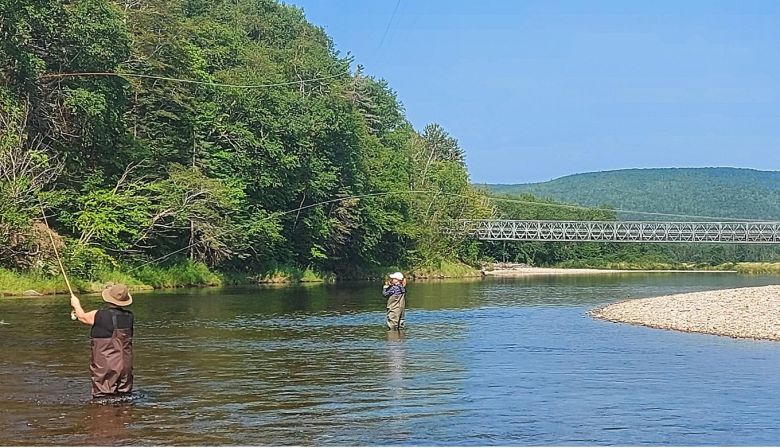
West River Sheet Harbour
Jillian Leonard, Conservation Biologist and Program Coordinator with the Nova Scotia Salmon Association (NSSA) says:
The year 2021 is another busy field season NSSA staff and I on the West River, Sheet Harbour and across the province since our smolt wheel and counting fence went in back in April.
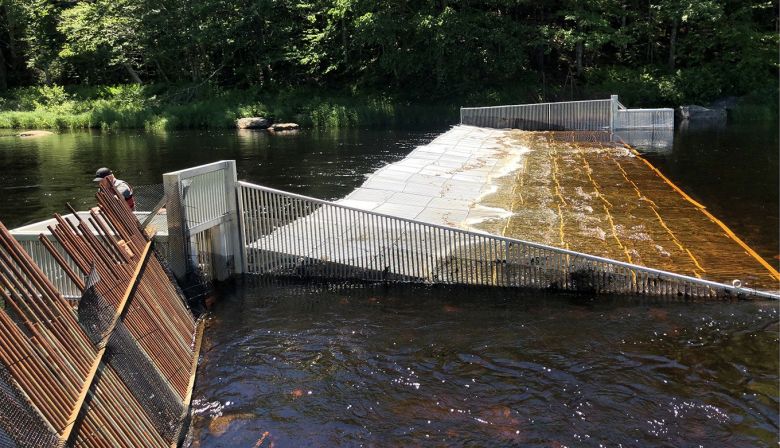
We have been engaged in lots of different research and monitoring projects as part of our efforts to restore wild Atlantic Salmon.
With the aid of volunteers from many different river groups, academic institutions, and government departments we have been monitoring water temperatures and making water quality measurement in a number of rivers across the province.
On the West River we have also been tagging and tracking trout, salmon smolts, and kelts to better understand their movements in the estuary.
We are now retrieving the receivers and in the Fall will be building reef structures to try to increase habitat. More on this project in the near future.
We are currently preparing for our annual catchment liming, planning on liming a record ~100ha this year, and we continue to operate the counting fence. Despite a few gaps in the fence that were letting some fish get through, the counting fence on the West River has been performing very well.
There were a flurry of fish through in the spring (catching seven over the span of a couple of days), but the counts have dropped off in recent weeks. That is normal though as this is the time of year when fish tend to hang out in the deeper lake downstream of the fence.
We have dozens of fish through so far and based on what we are seeing in other rivers like the Sackville we are expecting a big number of fish in late August and early September into the West River Sheet Harbour.
As with our other projects, volunteers on the West River Sheet Harbour, especially the Eastern Shore Wildlife Association, have played a big role in project success.
Conditions along the Eastern Shore have been good this summer.
Water levels remain good as a series of regular rain events has been keeping the river from reaching the lows we have seen the past few summers.
Temperatures have also been very good.
In addition to our temperature monitoring programs we also get a daily temperature at the counting fence.
In the past, at this time of year those temperatures have been worryingly high (high 20’s) but this year I am happy to report most of our temperatures have been either in the very low 20’s or below.
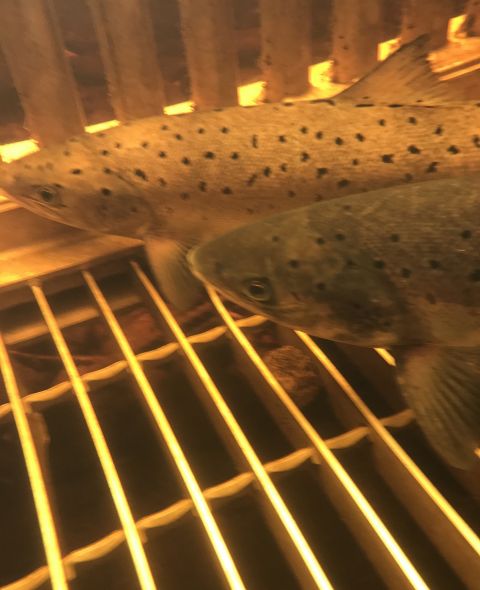
The counting fence has two large salmon and 34 grilse as of 31 July 2021, compared with no large salmon and 17 grilse in 2019.
LaHave – Morgan Falls
There have been 11 large salmon and 138 grilse as of 31 July 2021, compared with 11 large salmon and 133 grilse in 2019.
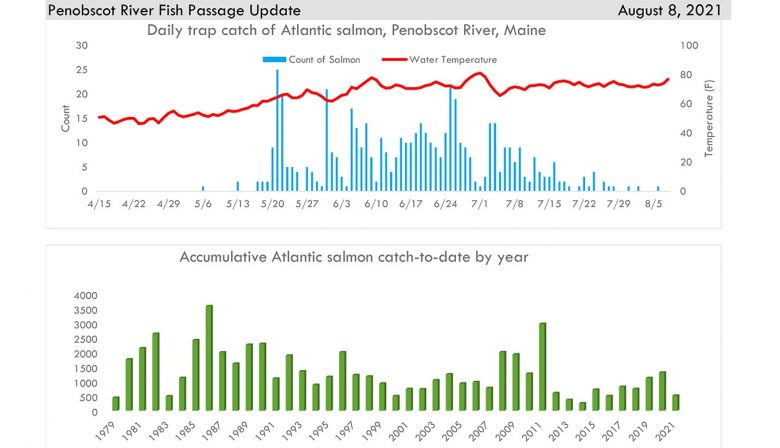
Penobscot
Maranda Nemeth, Director of ASF’s Maine Headwaters Project notes:
Low return especially with the high of last two years it’s hard to see. But there is still a great potential for a strong fall run. To date, we have surpassed the total returns to the Penobscot in 2016 which was 507 and to date, we are above 2013 and 2014 counts. Some hope there!
Jason Valliere remarked that the water temperature was 78 F. earlier this week, and undoubtedly has not gone down with the high temperatures in the latter part of this week.
